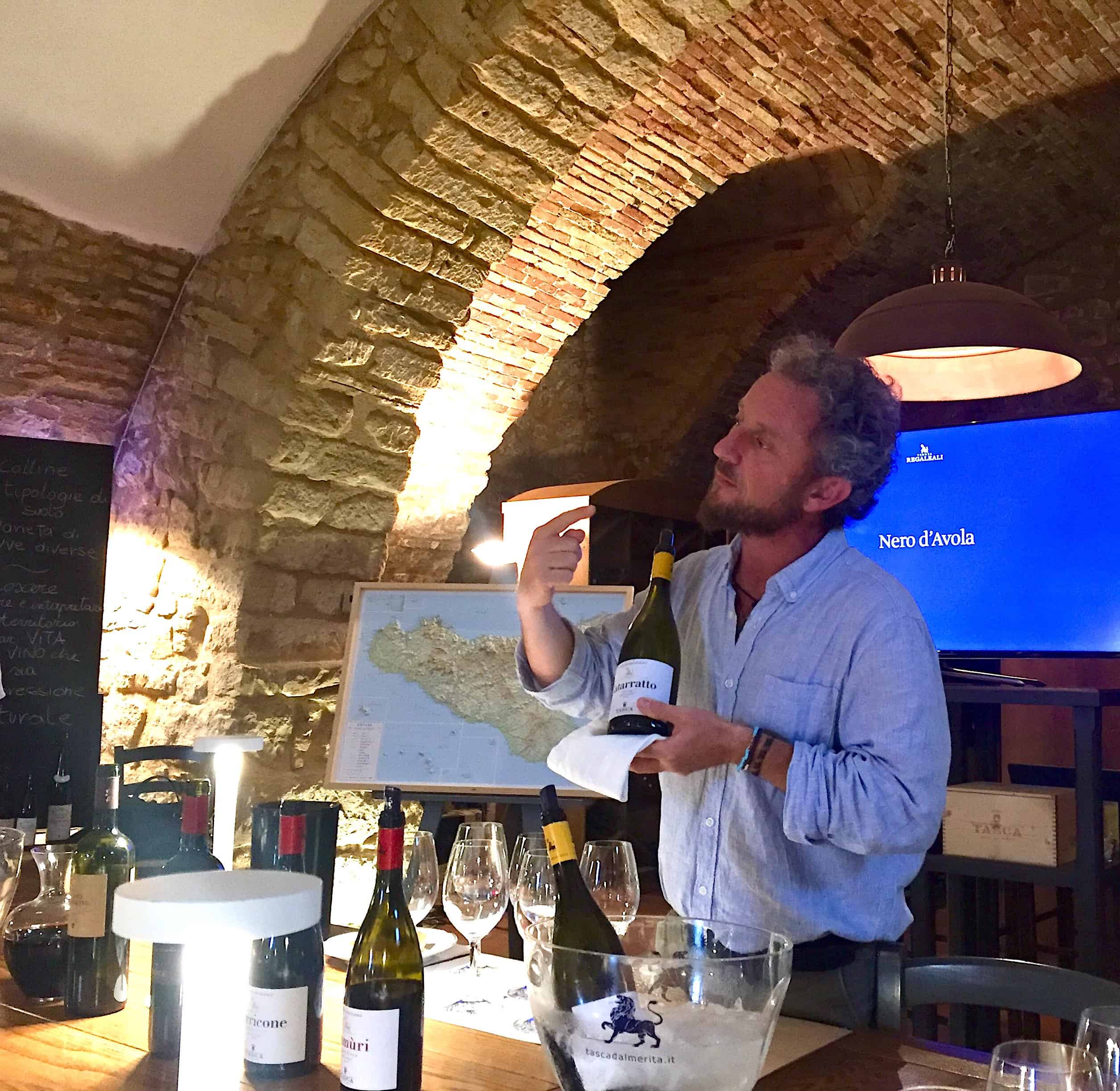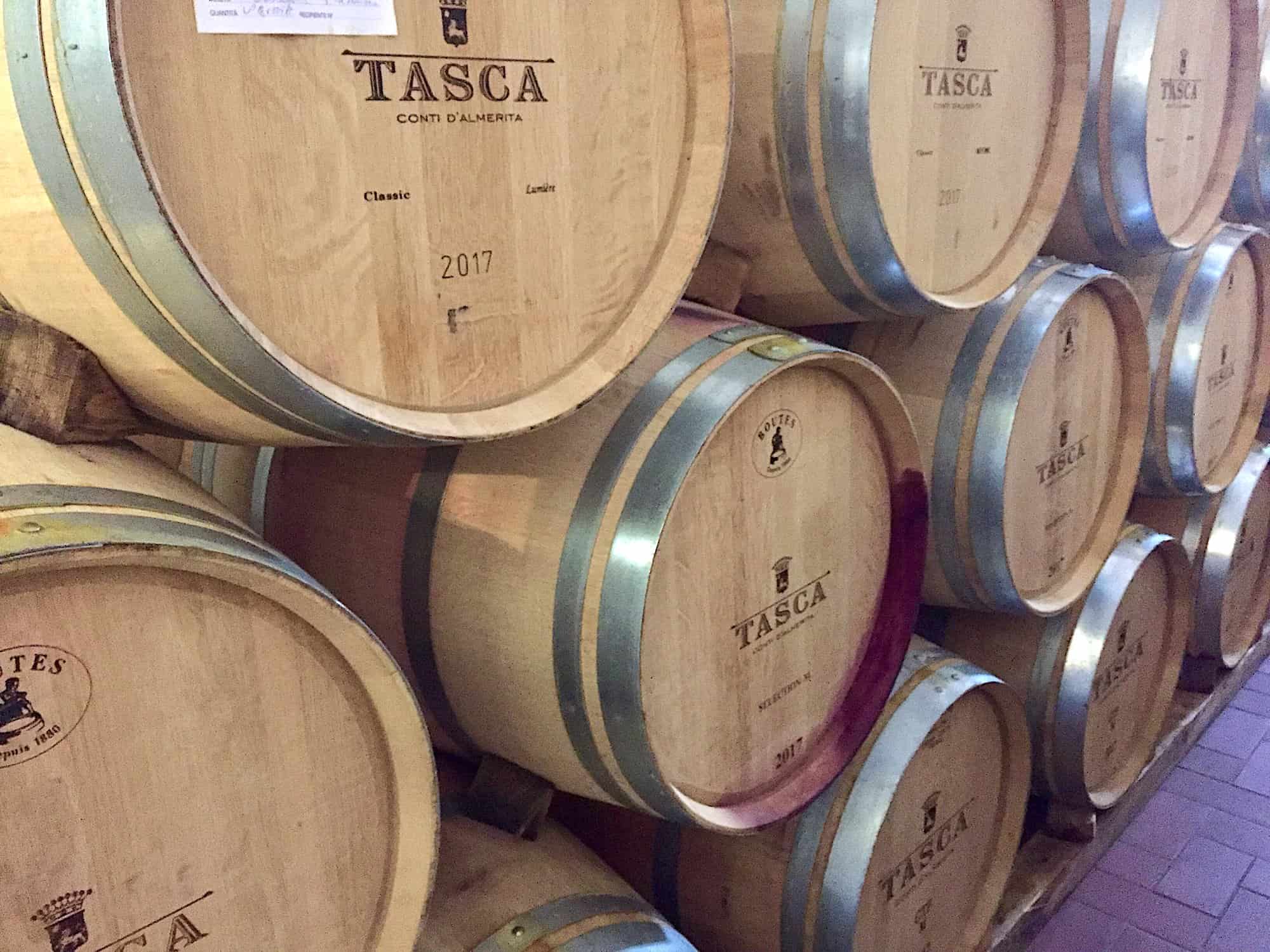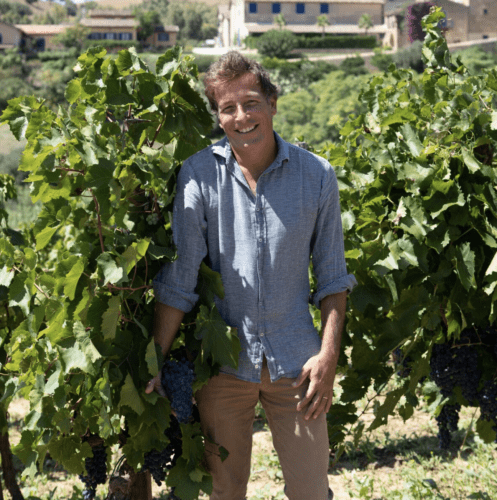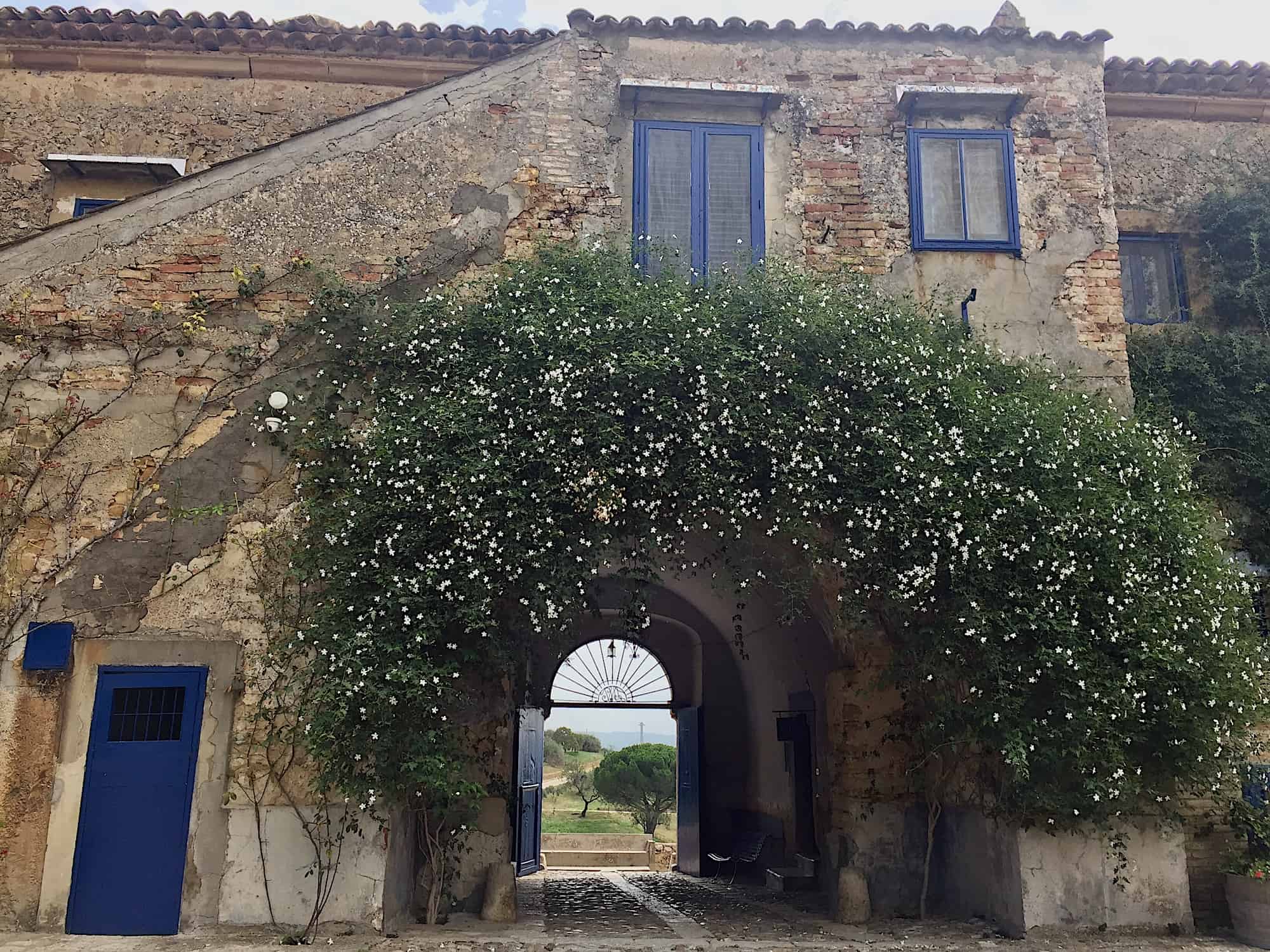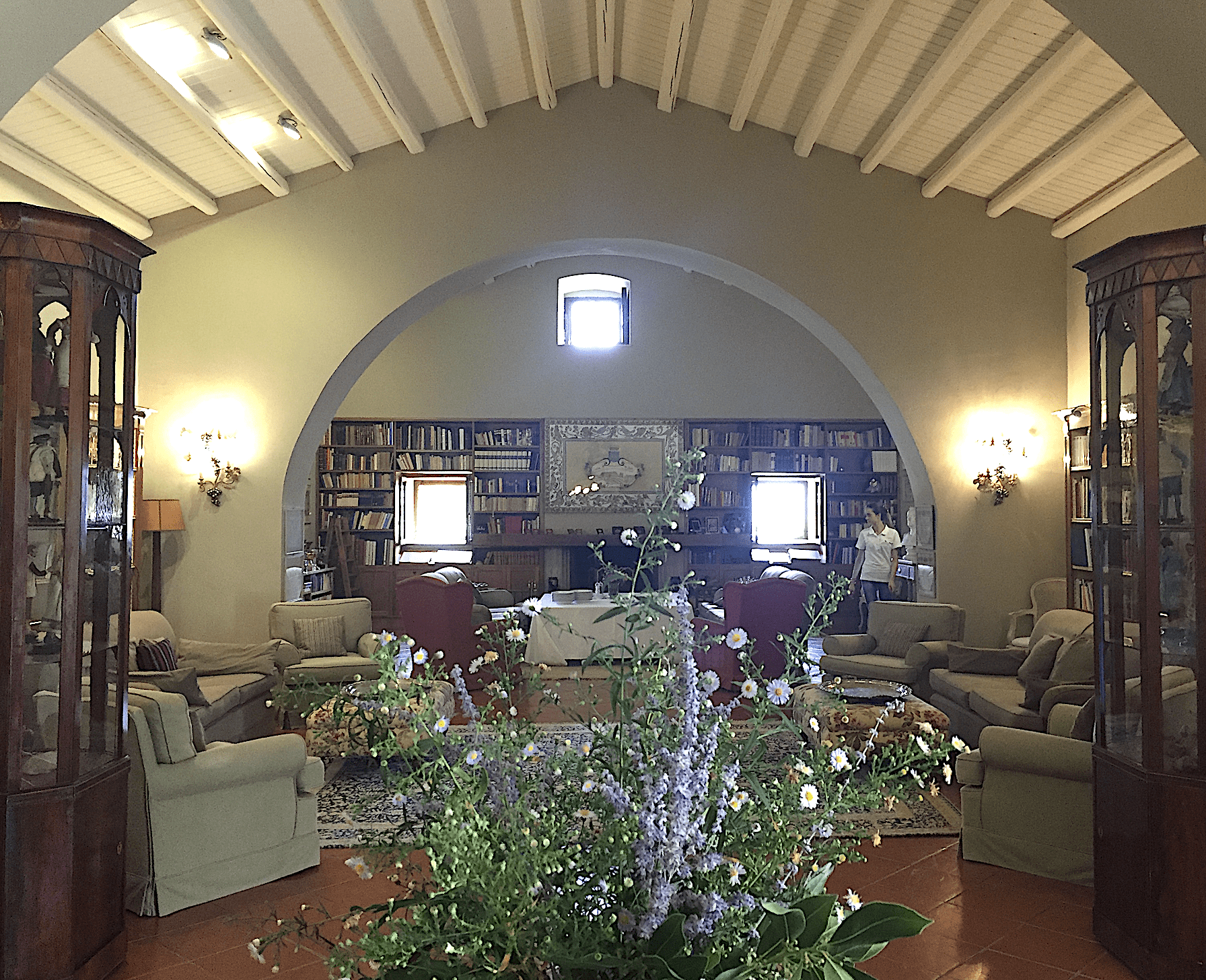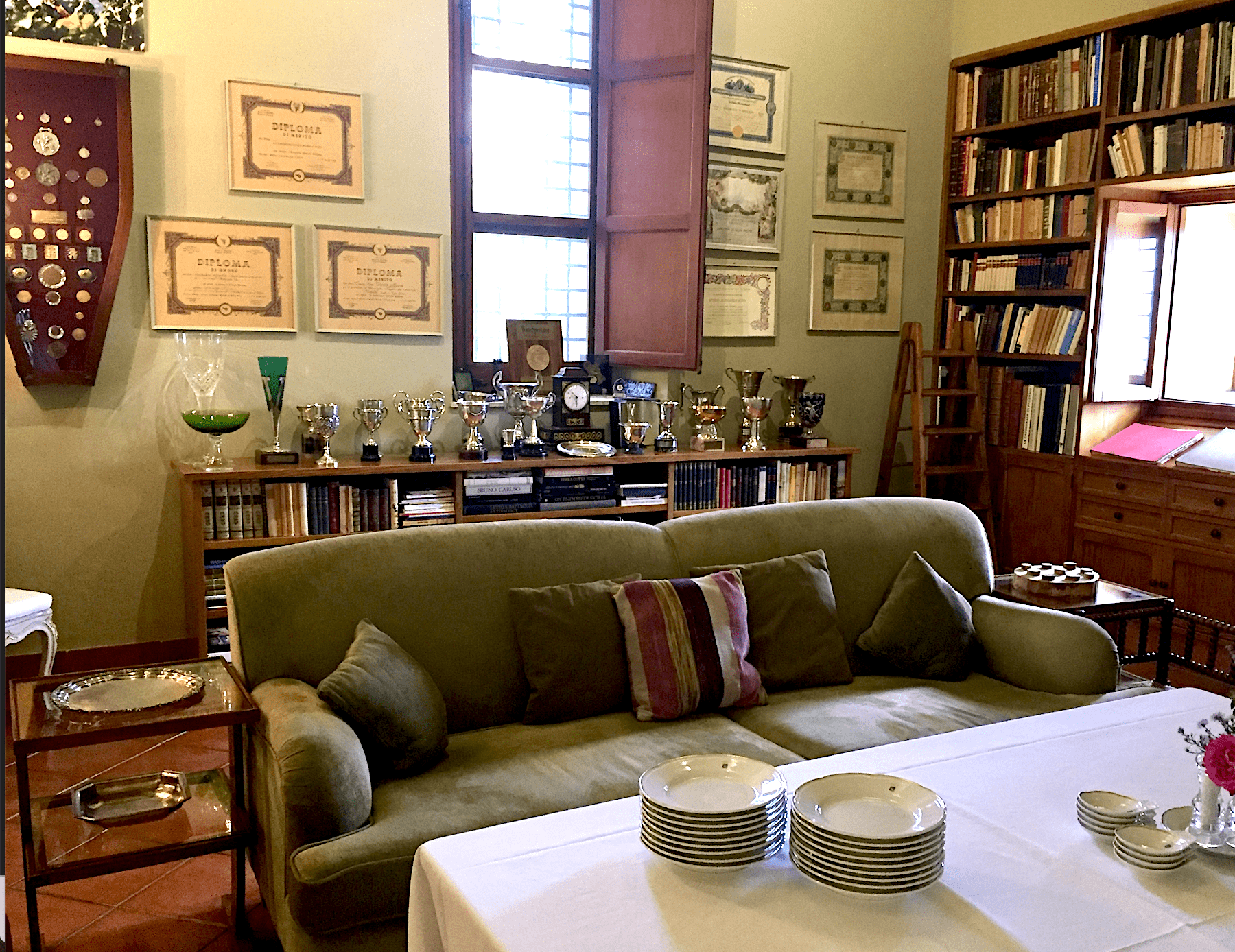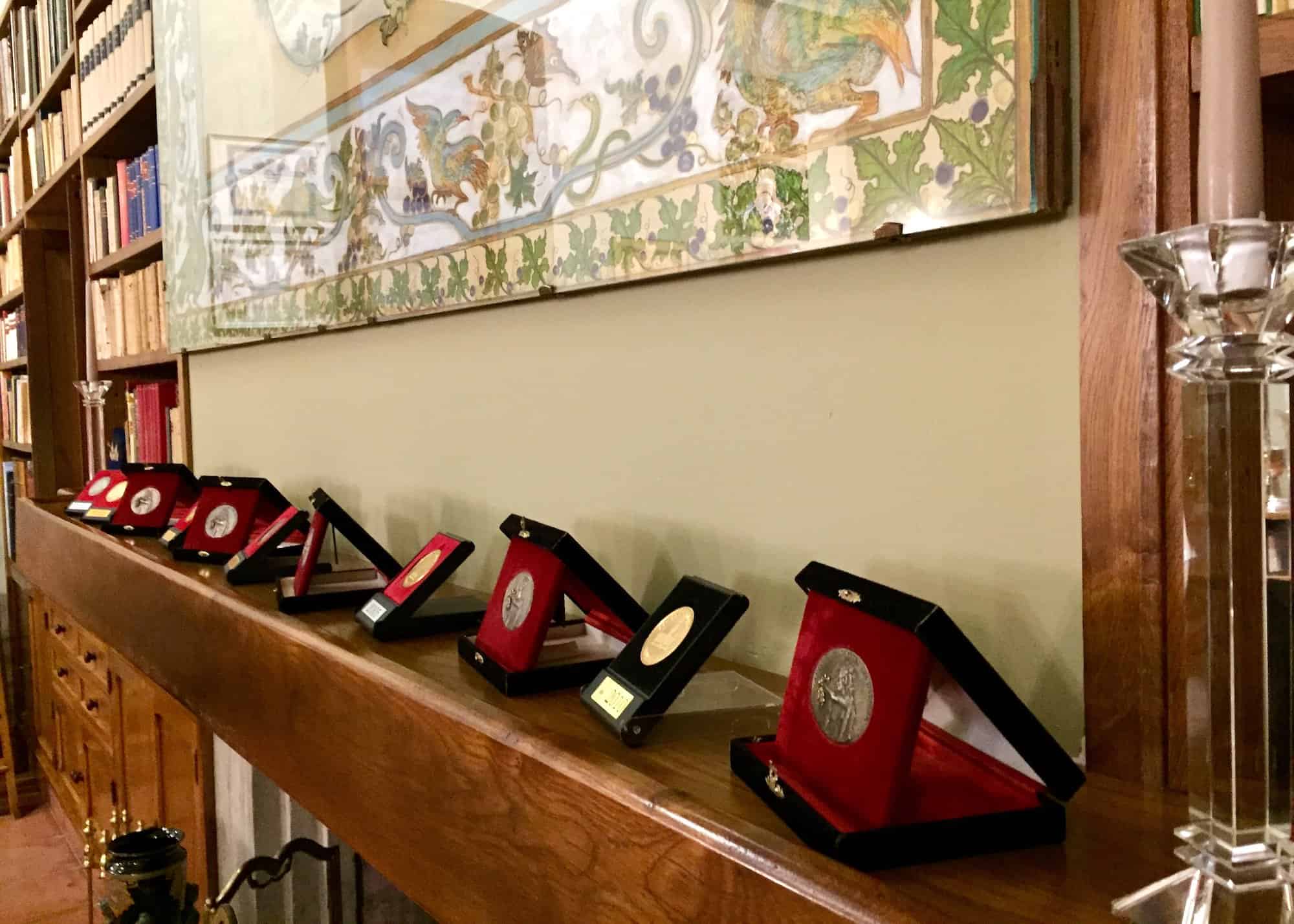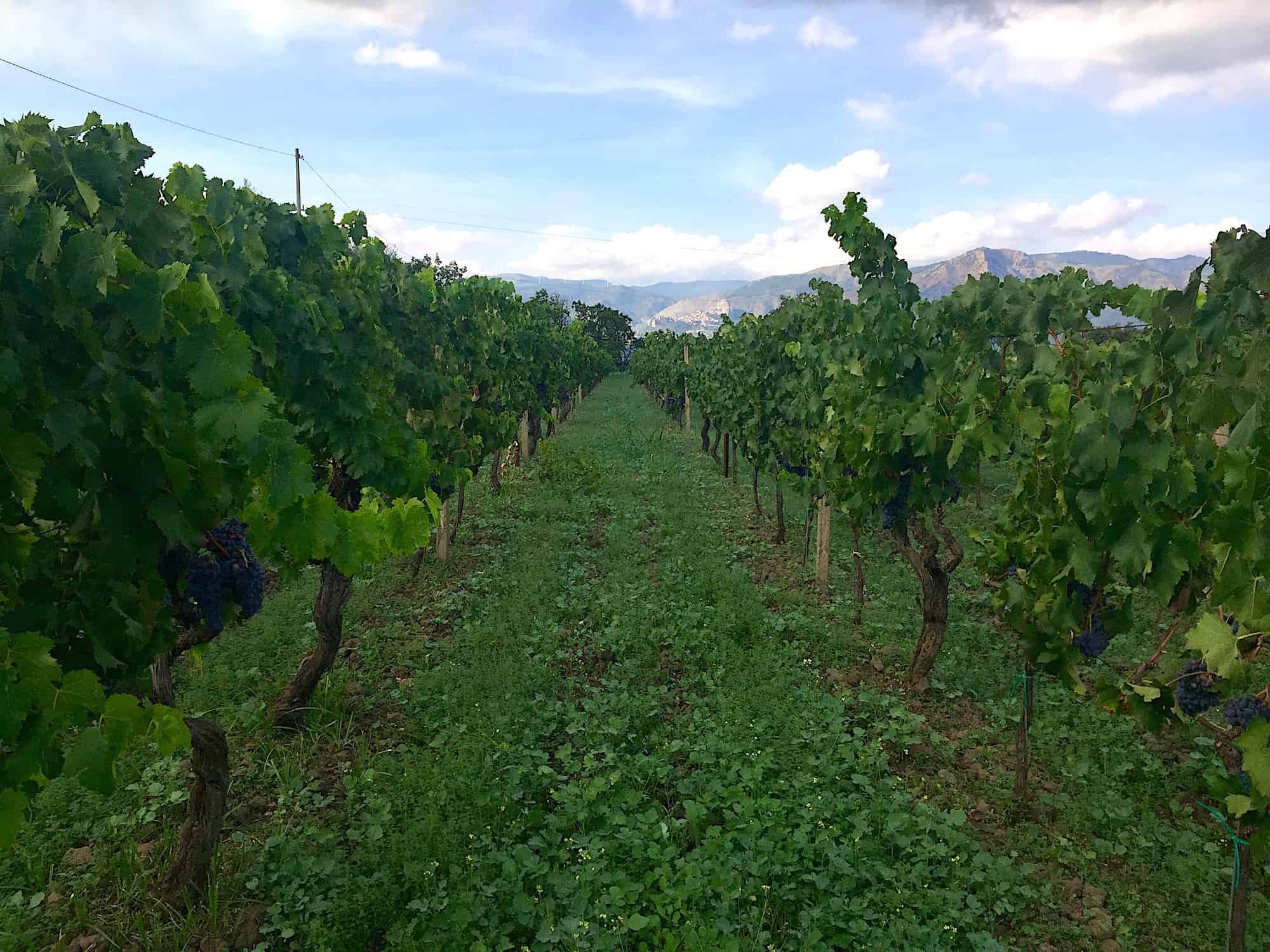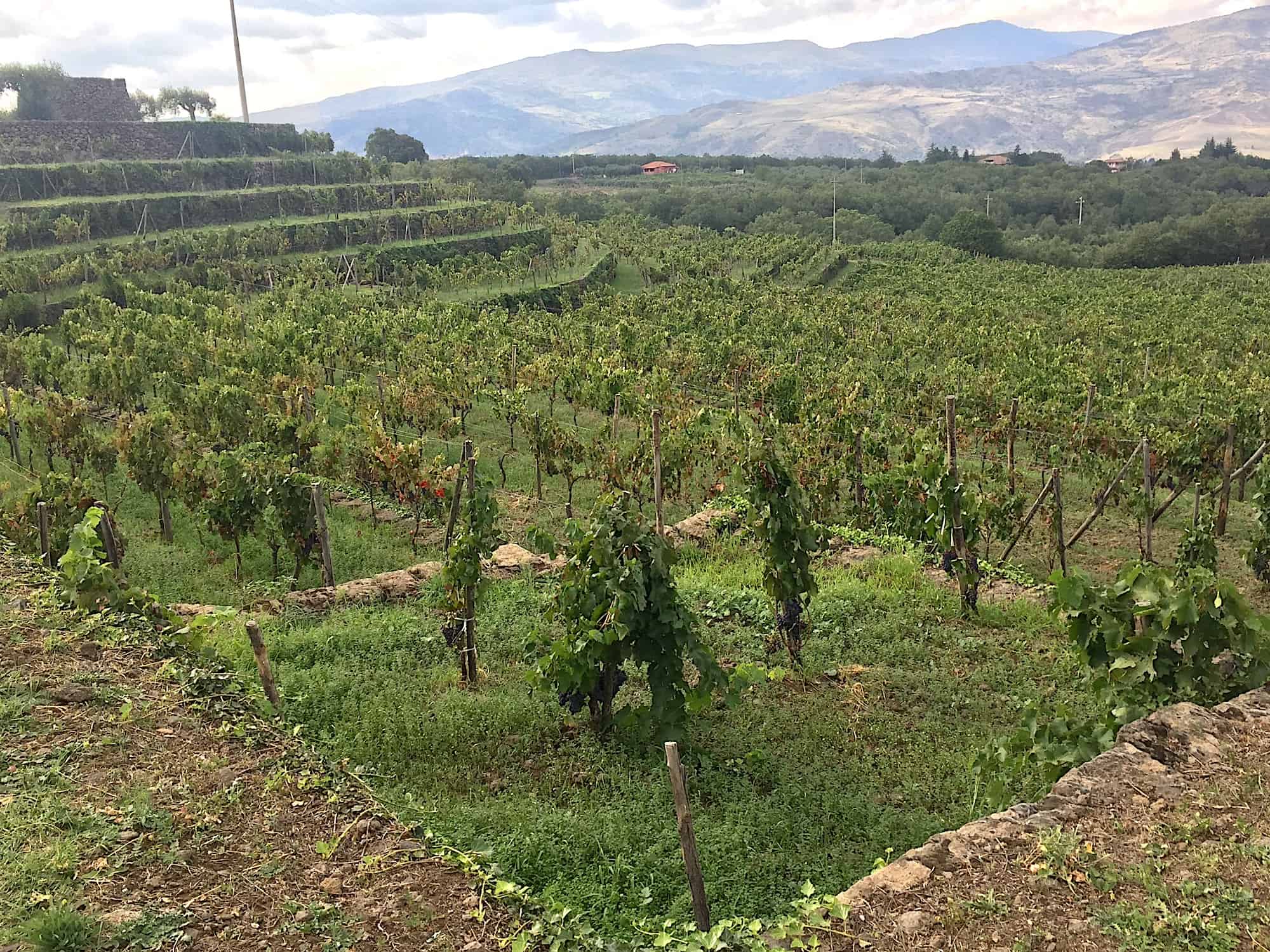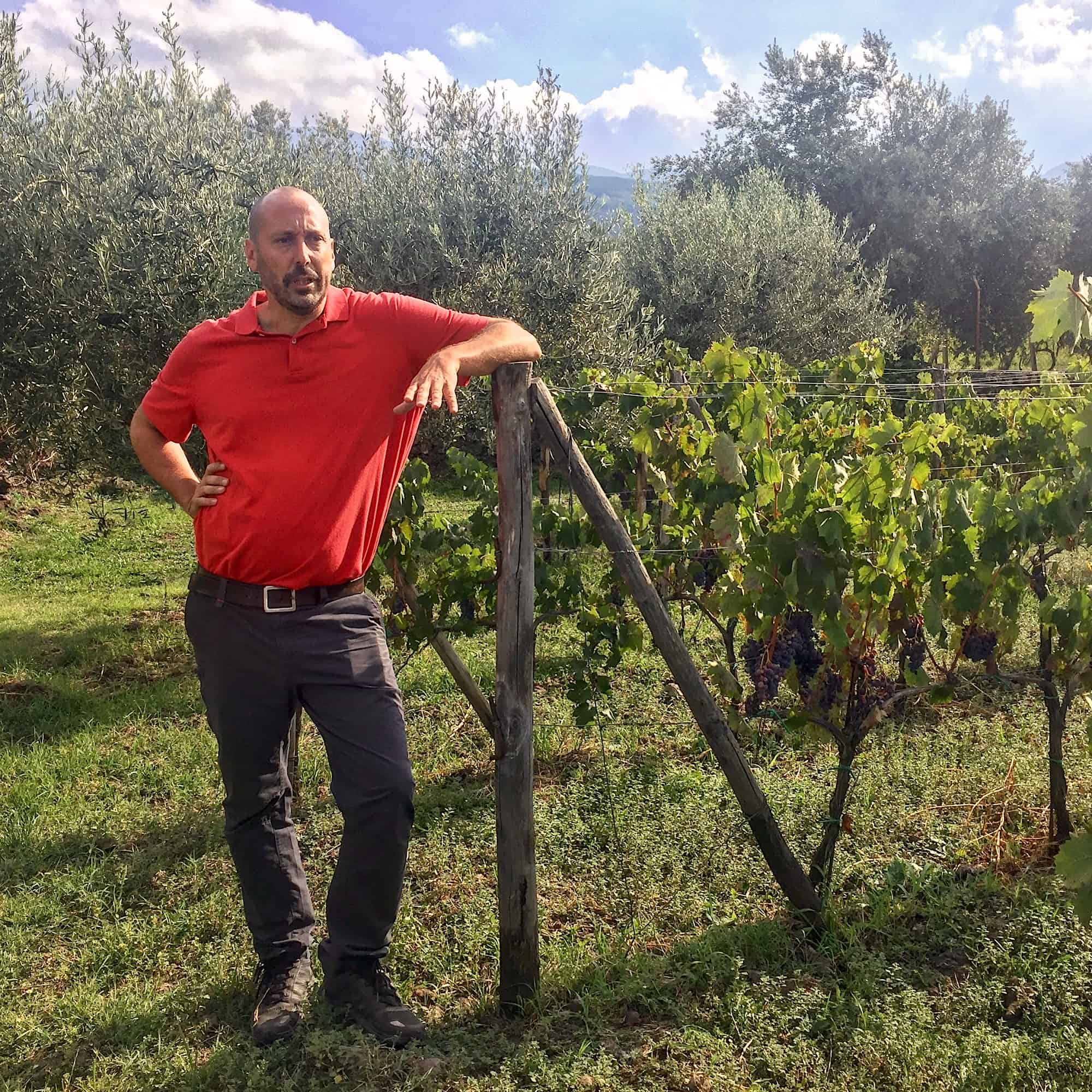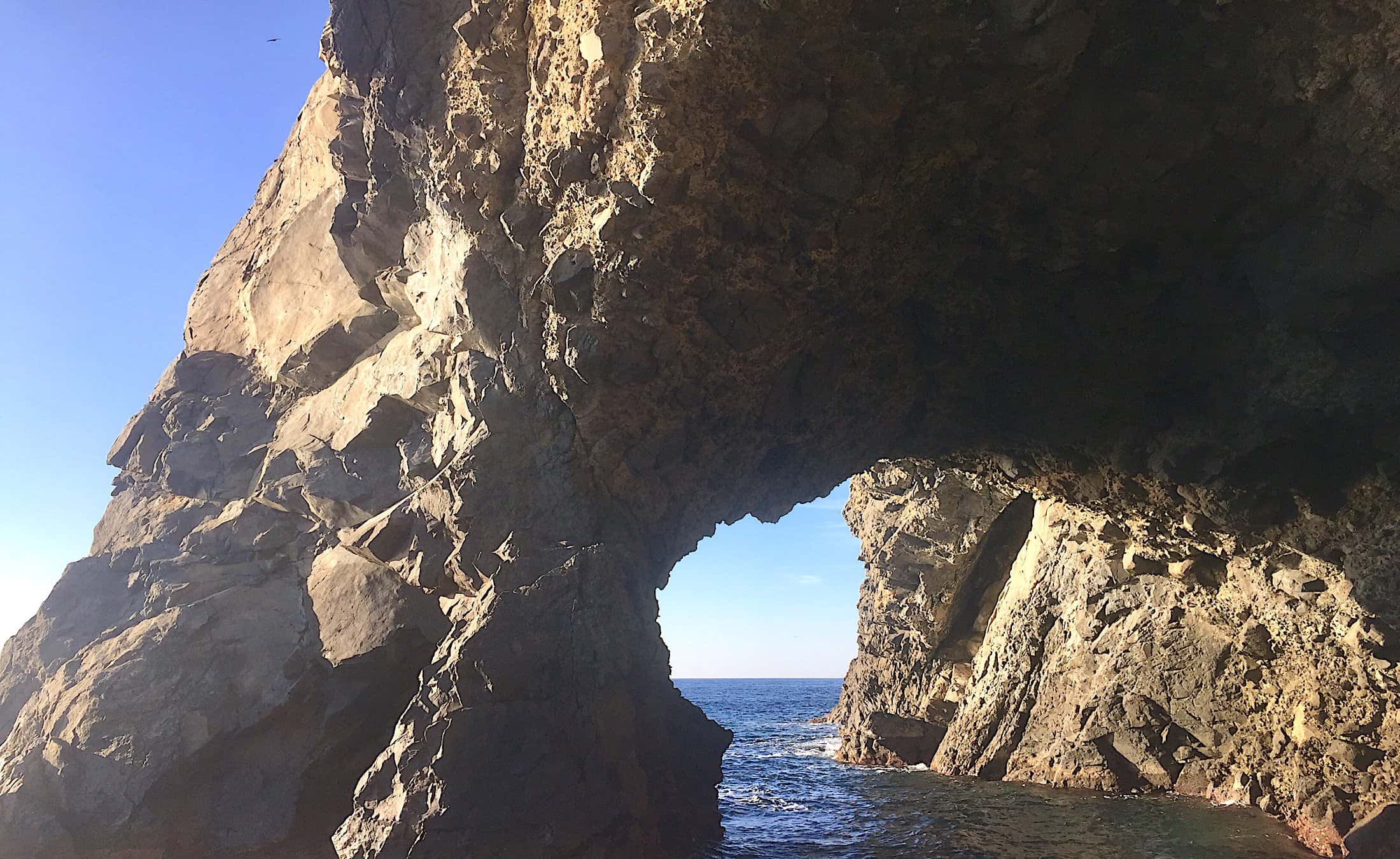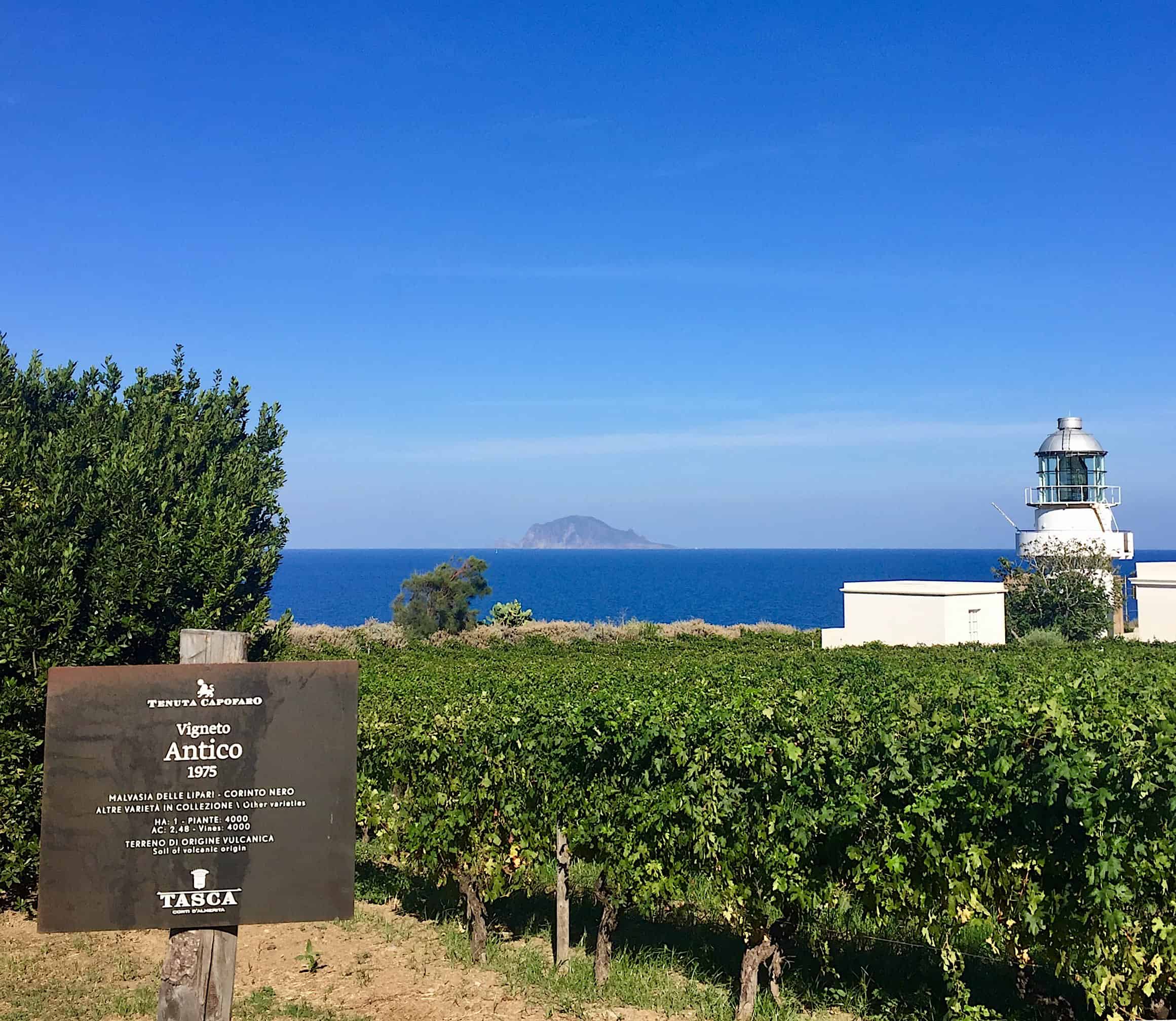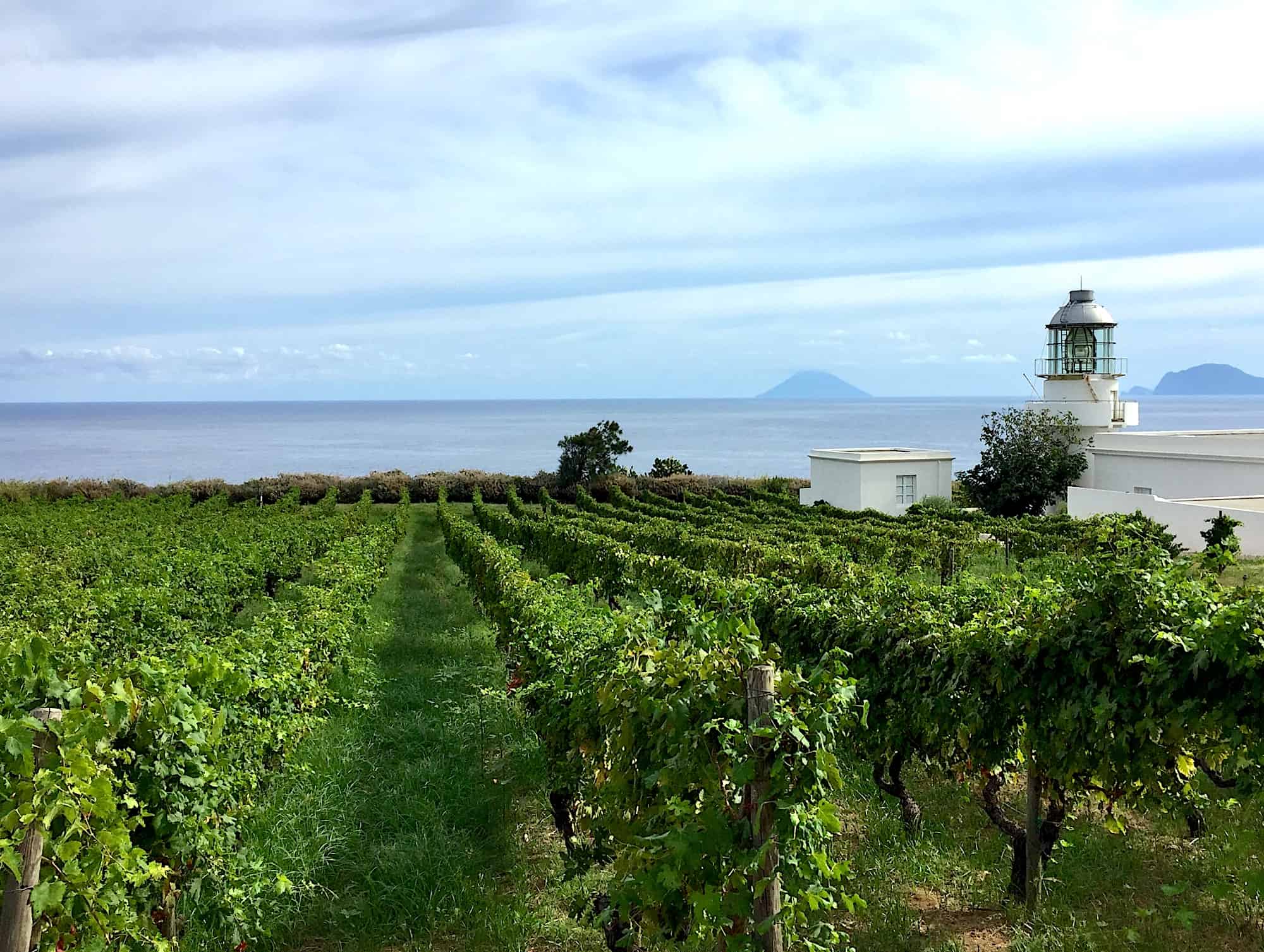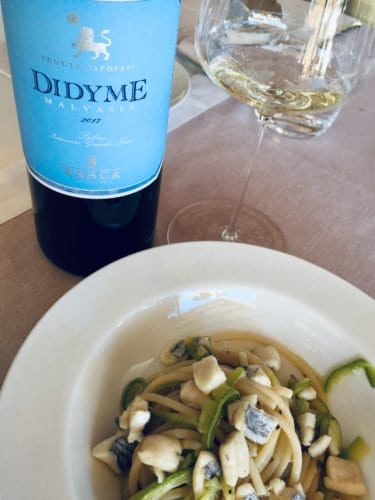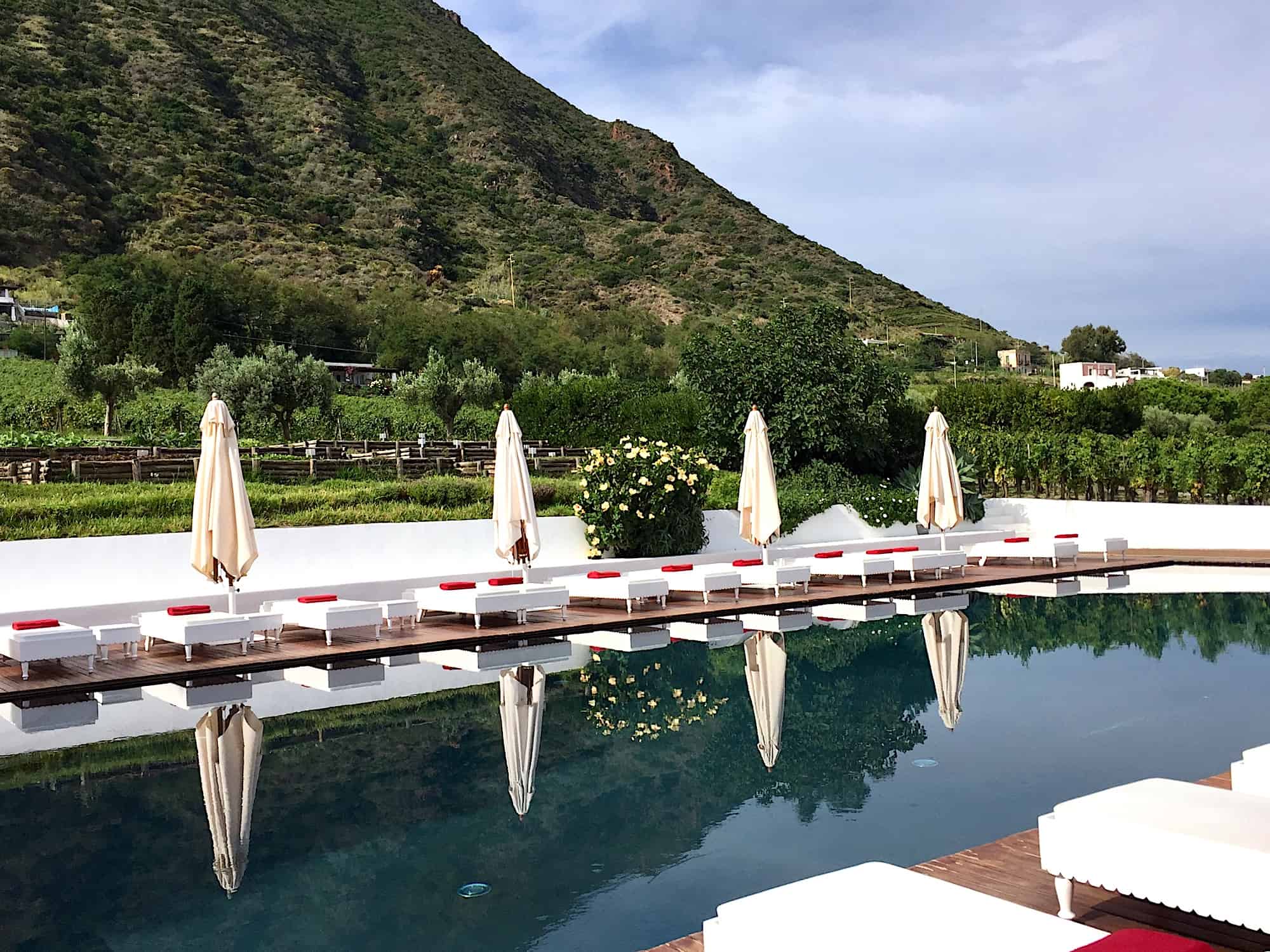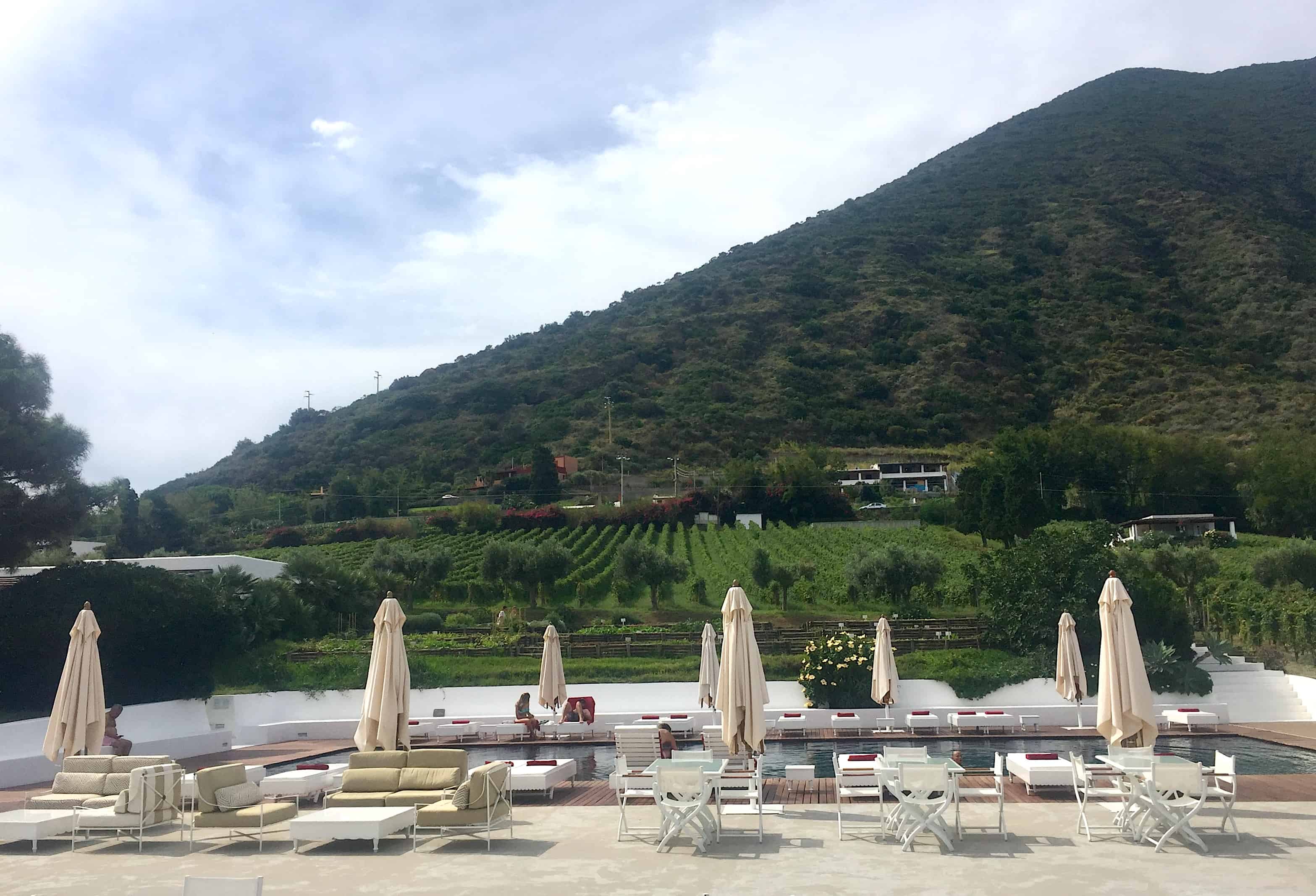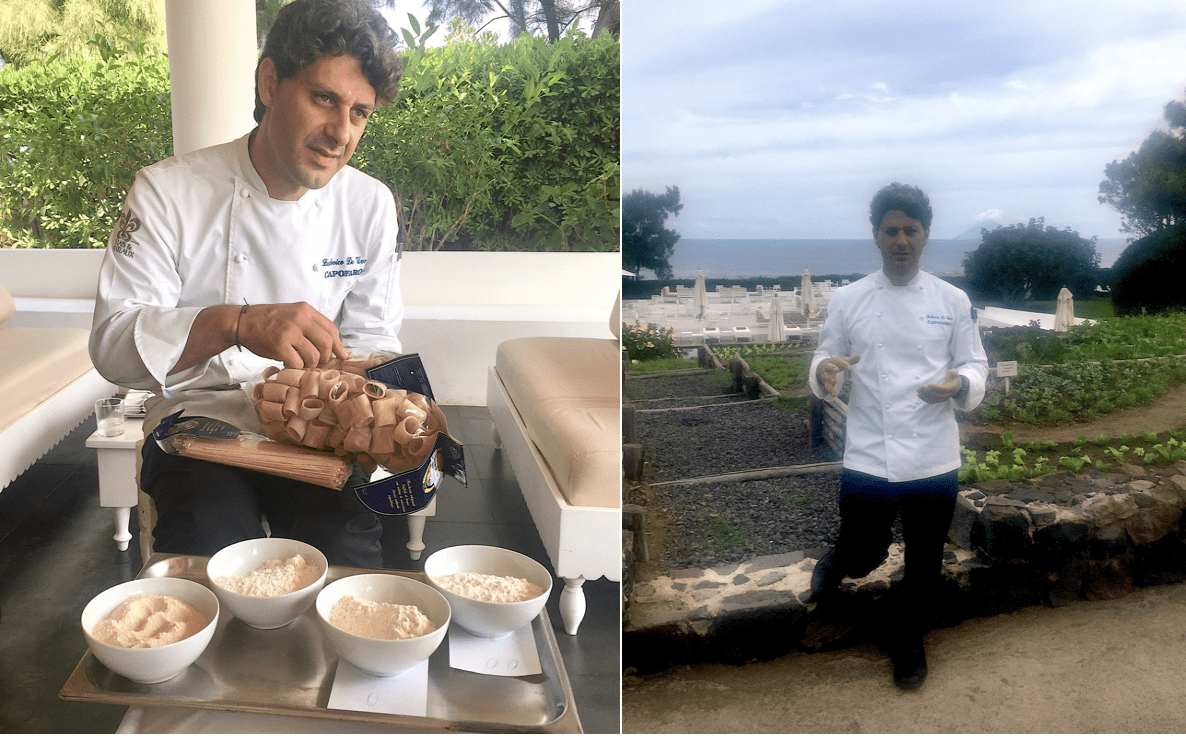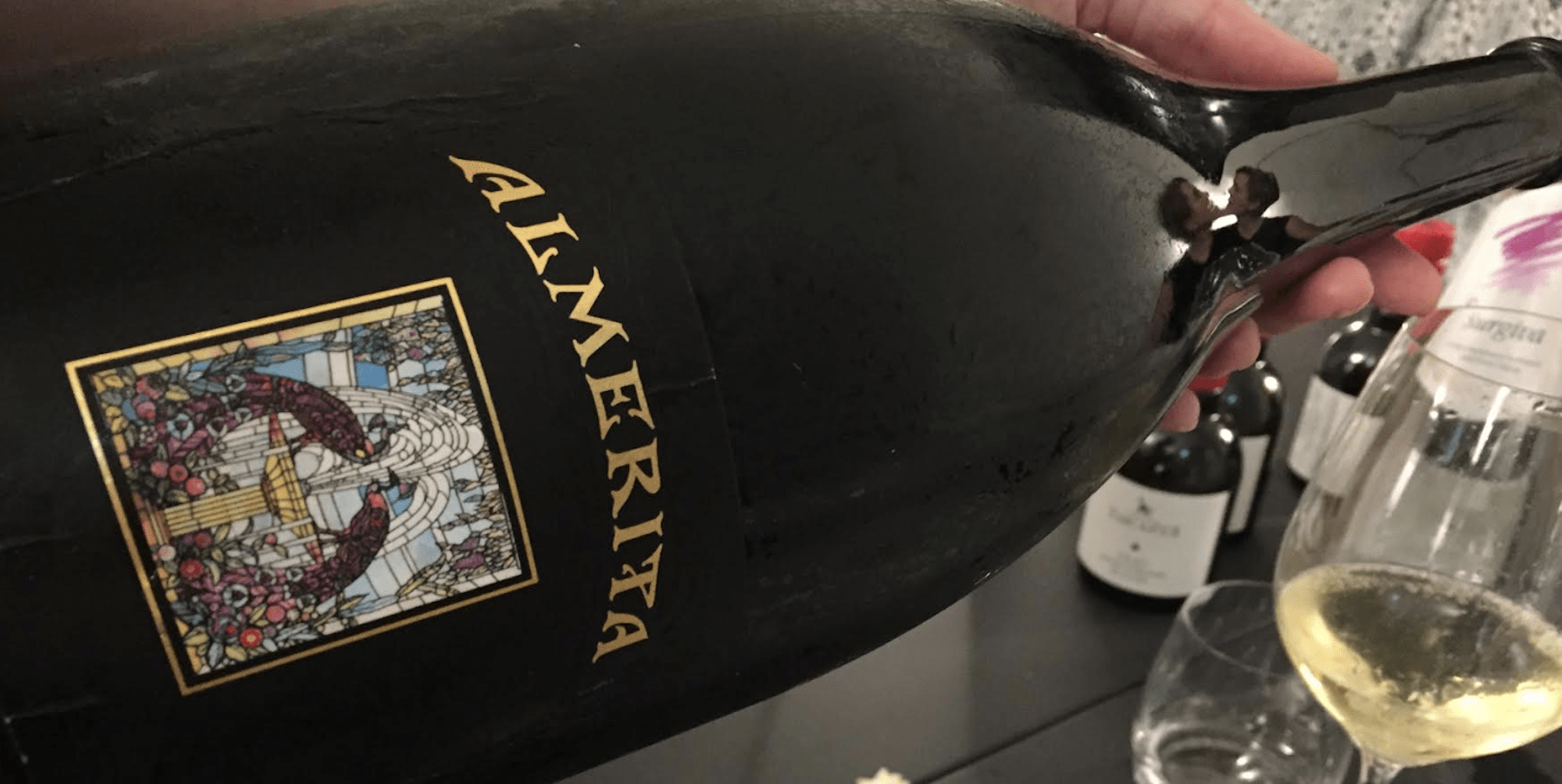We’re here in Sicily to explore Tasca d’Almerita for its wonderful wines, not to condense centuries of Carthaginian, Greek, Roman, and Moorish influences. Nevertheless, this is the island’s rich heritage, so it’s no wonder Sicilians call this “the eighth continent,” and not altogether in jest.
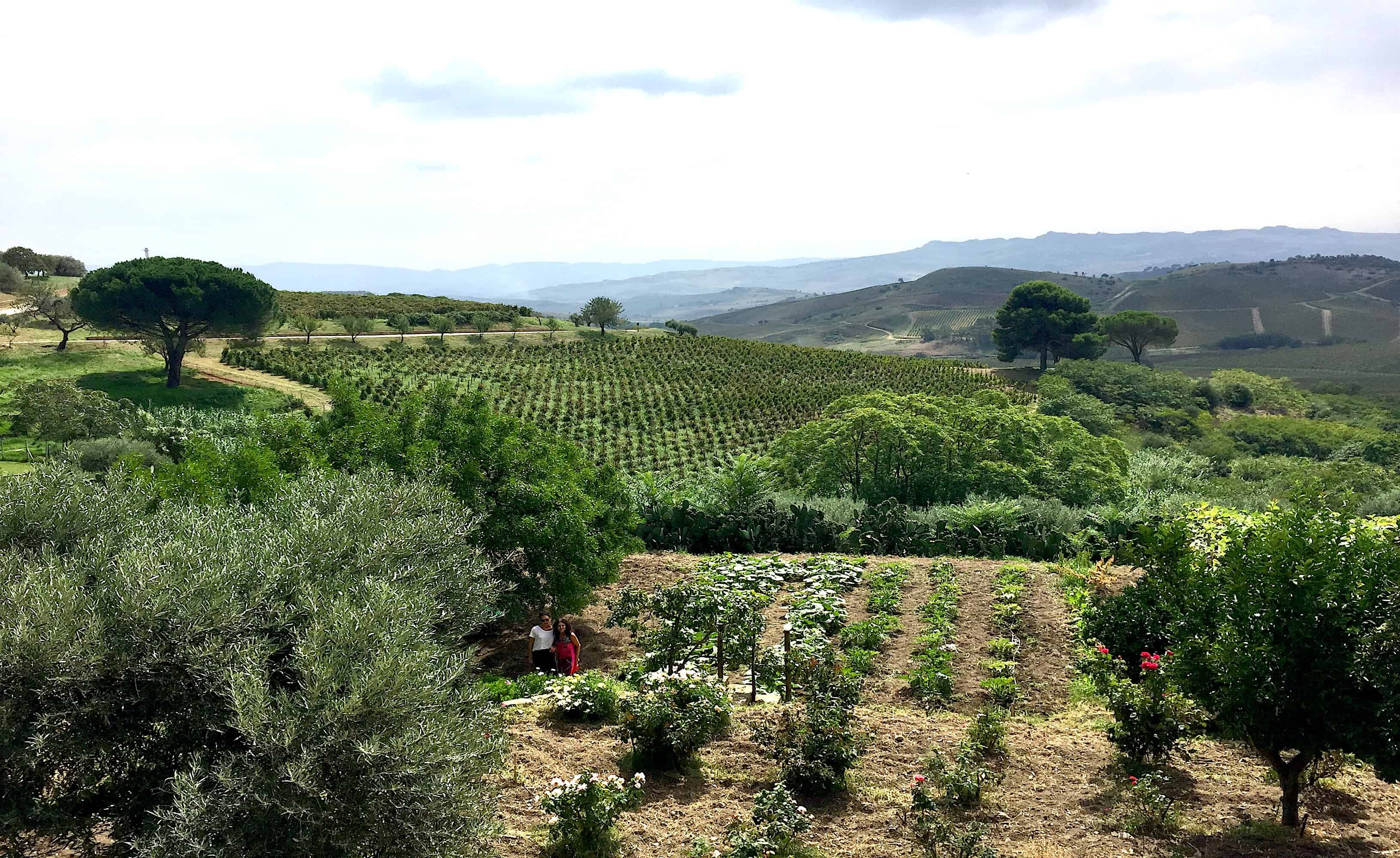
Vineyard views from Regaleali Estate in Sicily
Five Wine Pockets of Sicily
Wine grapes harvested from this land’s lush vineyards can tell that story well. Five regional pockets (or “tasca” in Italian) cultivated by Sicily’s leading family brand, Tasca d’Almerita, represent a different aspect of Sicily’s complex character. These distinctive wines that let the terroir do the talking are driving Sicily’s unprecedented shift toward quality on a global scale.
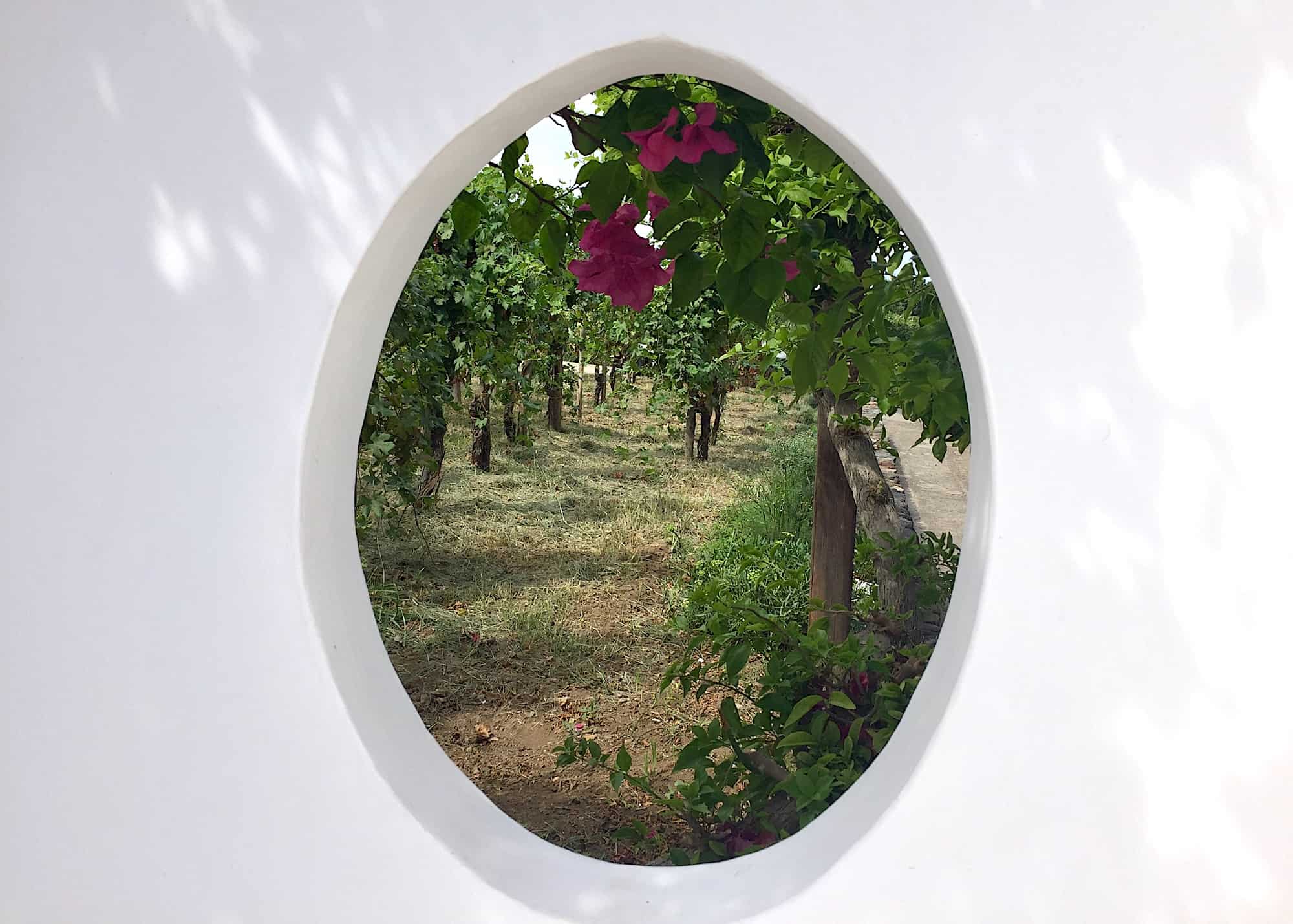
Vineyards through a peephole in the wall at poolside, Capofaro, Aeolian Islands
Anna Lanza Tasca Cooking School
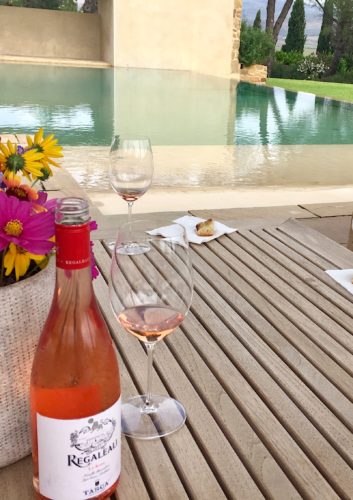
Drinking rosé poolside at Regaleali Estate
- In addition to the highly acclaimed Regaleali home base estate with its famous Anna Lanza Tasca cooking school, Tasca d’Almerita has five different properties around the island, producing 30 unique wines exported to 50 countries.
On terraces hand built into the volcanic slopes of Mount Etna, the Tascante brand (cleverly composed as Etna written backward and attached to the family surname) embraces three high elevation vineyard sites.
On a hillside outside the capital city of Palermo, Tenuta Sallier de La Tour has weather and soil ideal for cultivating Syrah.
On the small island of Salina in the spectacular Aeolian archipelago, Tenuta Capofaro produces two wines from the Malvasia grape.
And, on the tiny ancient island of Mozia near Marsala, Tenuta Whitaker specializes in Grillo grapes.
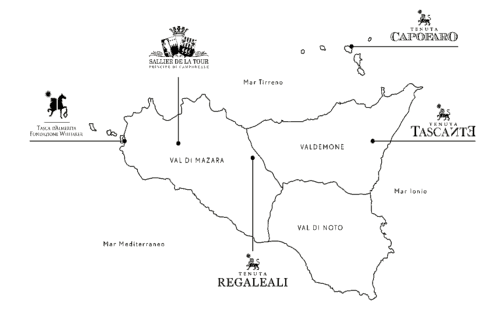
Sicily: The five diverse Tasca d’Almerita regions around the triangle-shaped island
An Island Football in the Crossroads
On a map of the Mediterranean, place a finger on this volcanic island, a football off Italy’s boot, to appreciate that a swift kick by Mother Nature has landed it closer to North Africa than Rome. This geographical fact is more than just a conversation starter. Blessed with extremely fertile soils and destined to have been a pawn in a series of conquests by diverse cultures, Sicily is an agricultural phenomenon.
The Greeks brought olives and grapes; Romans brought grains; Moors brought lemons, oranges, pistachios, and sugarcane. After centuries as a strategic crossroads of the Mediterranean, today’s conversations come right back to great Sicilian food and wine.
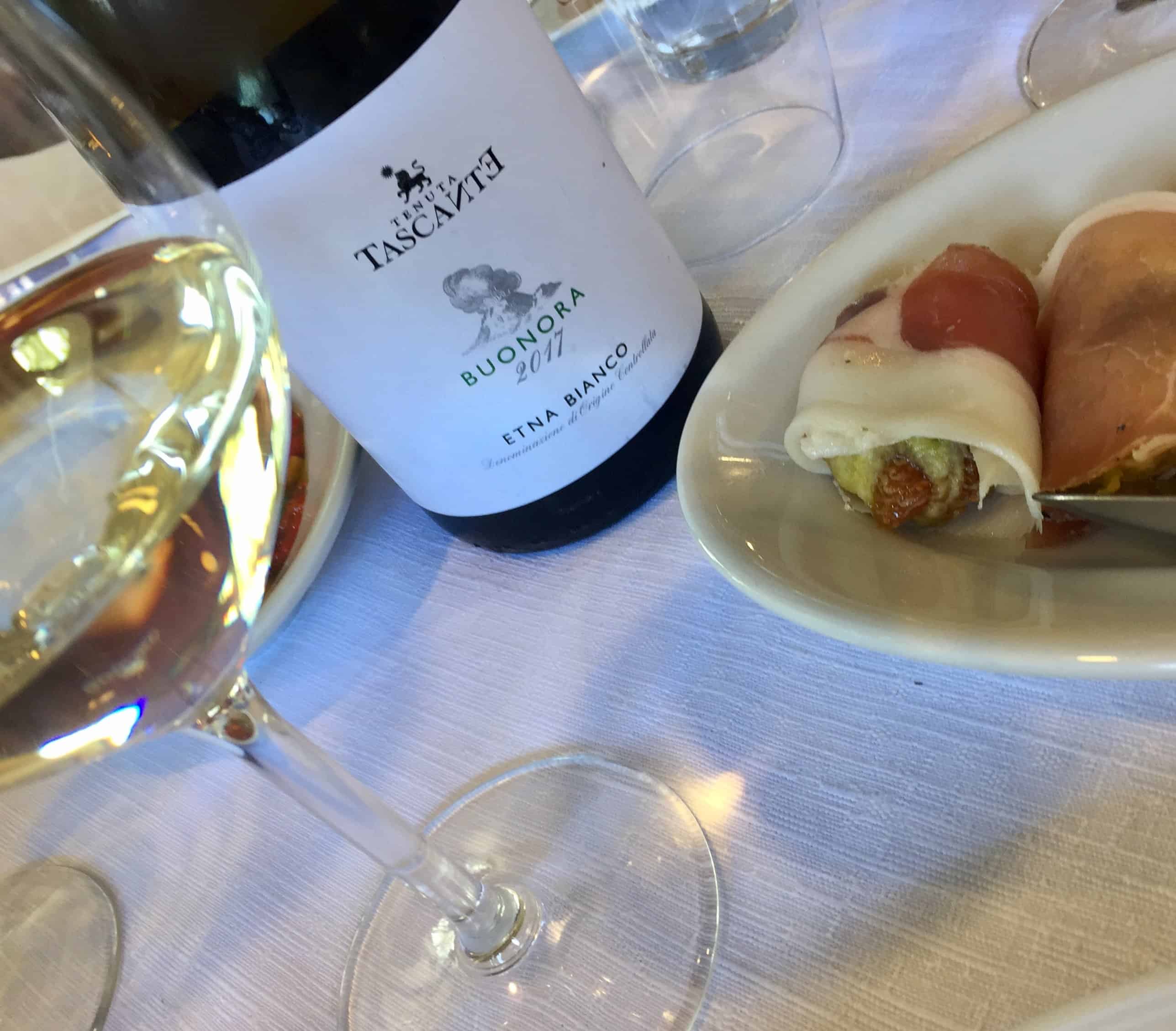
Tascante, Etna Bianco
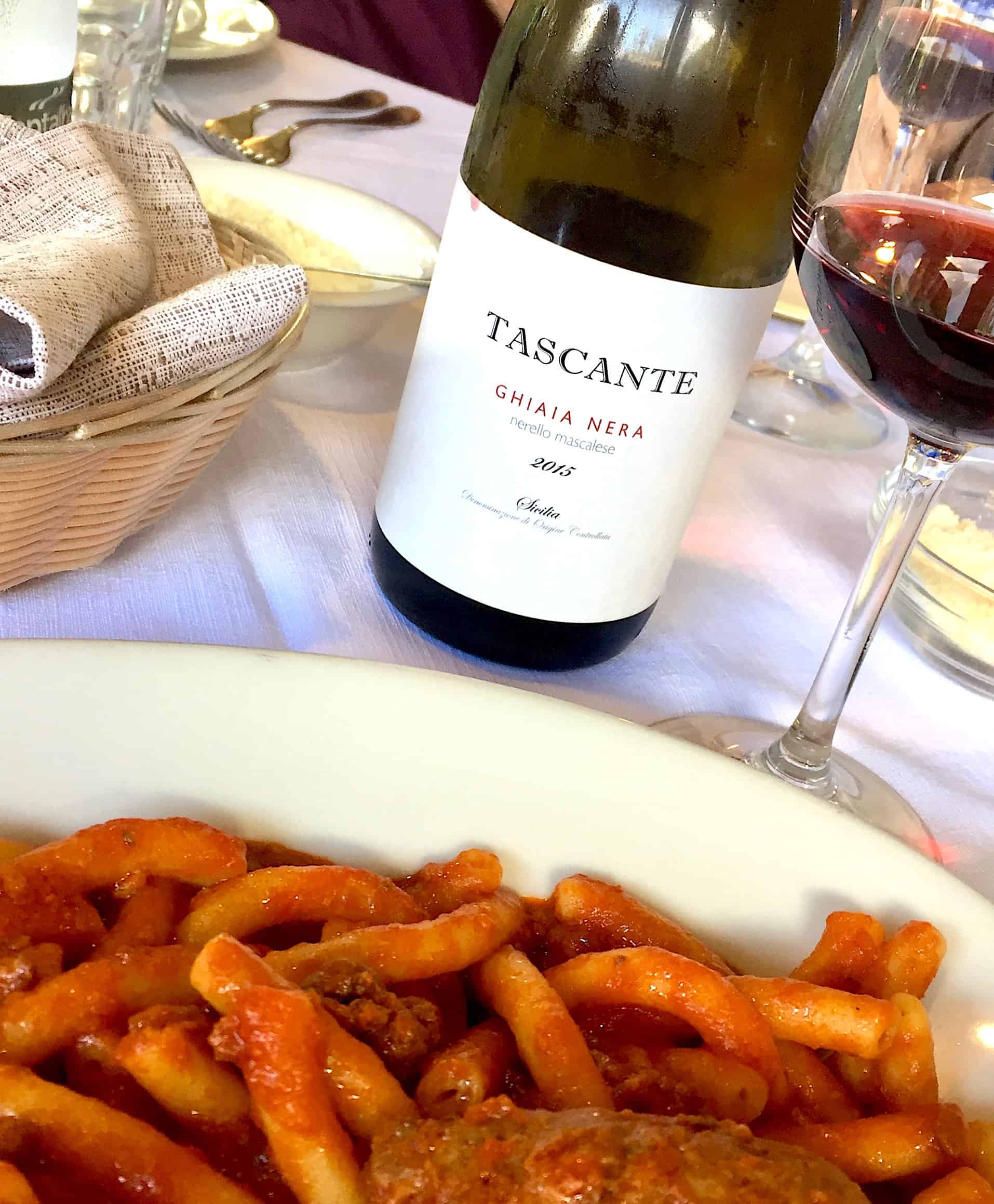
Tascante, ruby red in the glass, from Etna
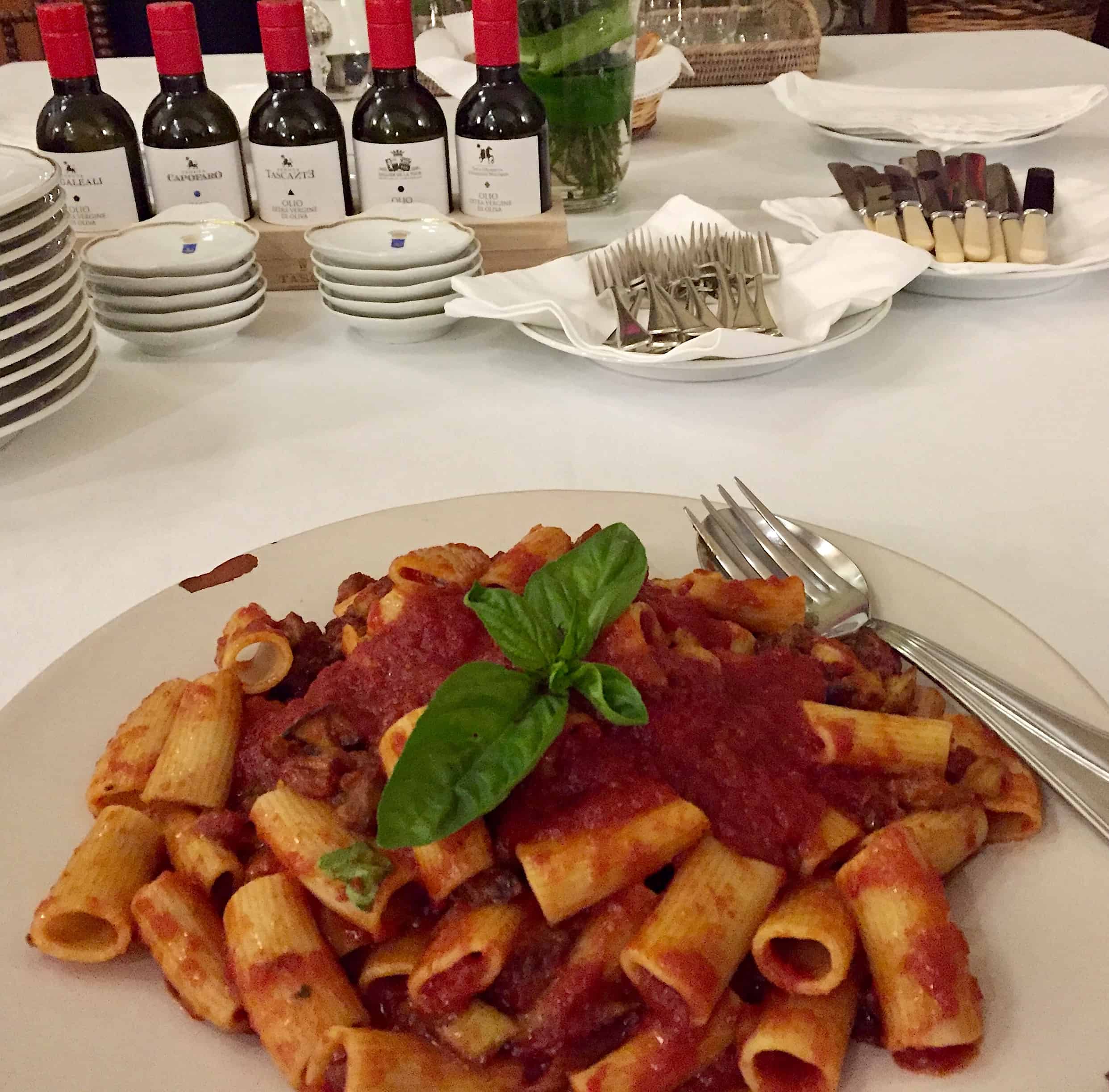
Pasta at Regaleali in Sicily
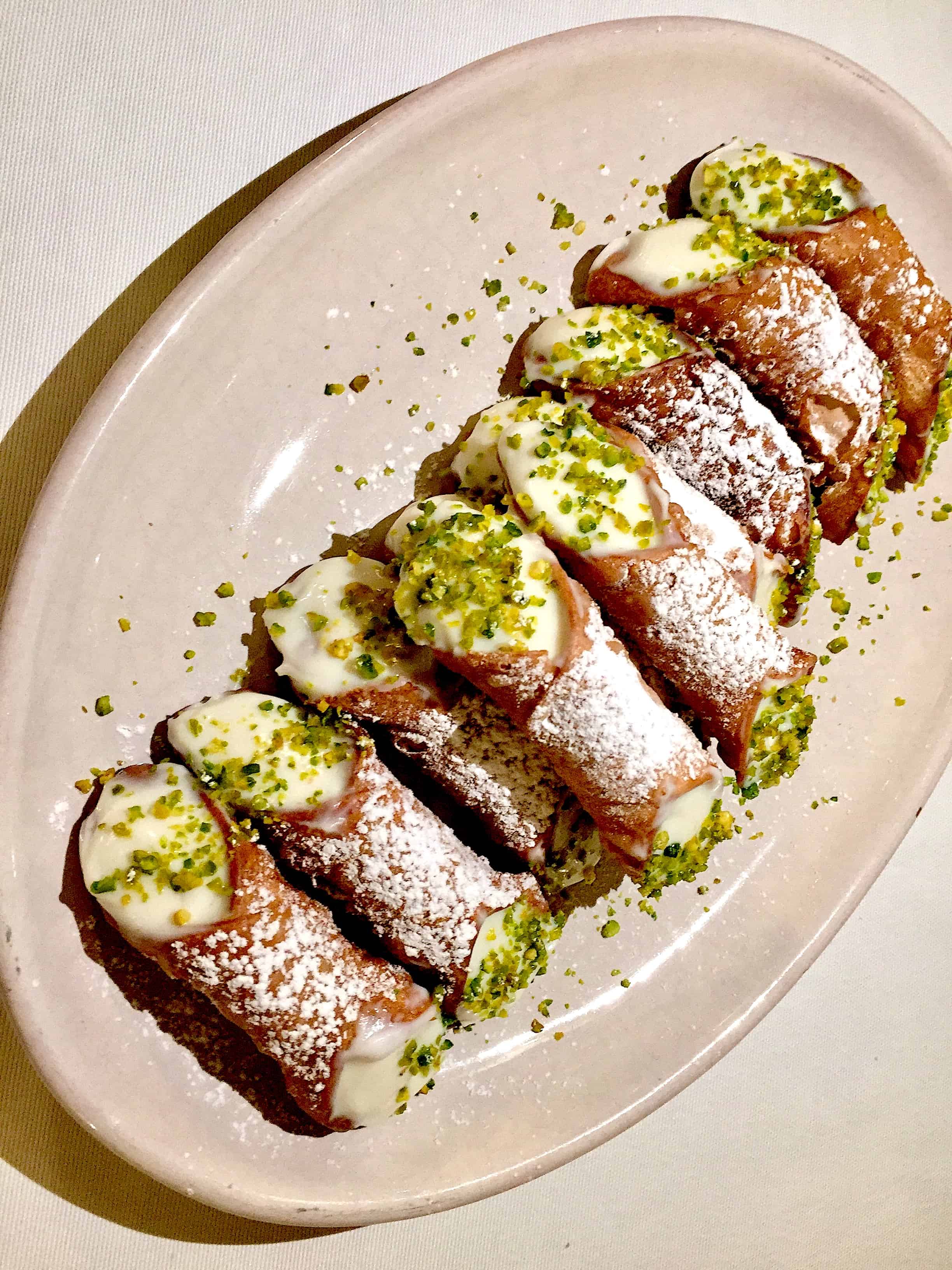
Homemade cannoli, a Sicilian specialty, served at Regaleali
A career-long tourism, destination, hotel sales and marketing pro, Laurie Jo Miller Farr is a dedicated urbanite who loves walkable cities and has a knack for always finding the best public restrooms. As a San Francisco-based travel and copywriter, she enjoys views from its crazy signature hills following half-a-lifetime promoting her dual hometowns, a couple of oh-so-flat places: NYC and London. Her work is found online at USA Today, Yahoo, Eater, CBS, Where Traveler, and more. She tweets @ReferencePlease and posts on Instagram @lauriejmfarr.
